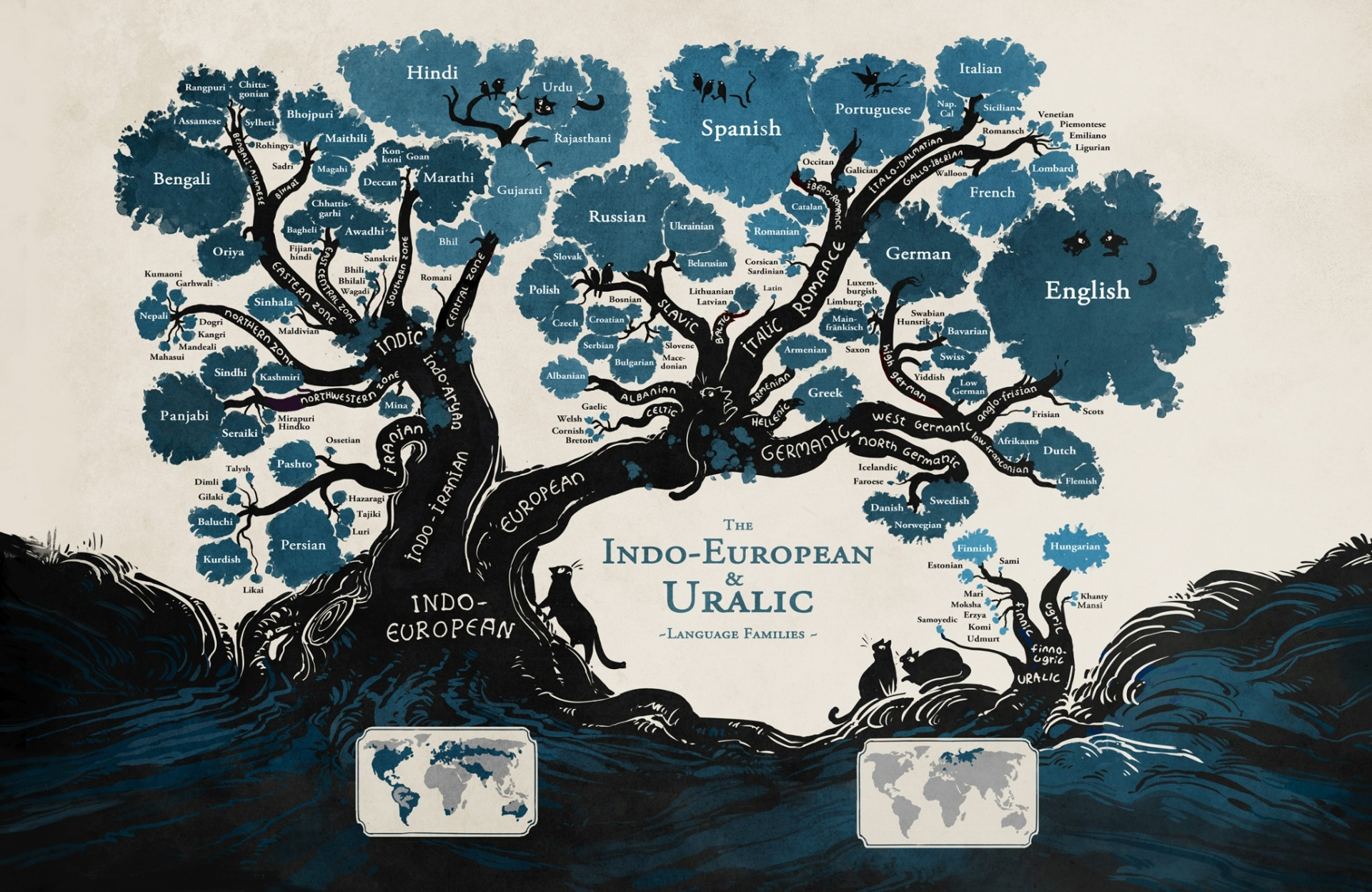Linguistics in the Nordics
The scientific study of language form and meaning, including the specialised branch of runology, has been a prominent academic pursuit in the Nordics since the Middle Ages.

The Nordic countries have produced a number of important linguists and philologists, including Rasmus Rask (1787-1832), Karl Verner (1846-1896), and Otto Jespersen (1860-1943). Linguistics has been a popular scholarly occupation in the region since medieval times, going back to at least 1150, when the First Grammatical Treatise was written. This document, which, broadly speaking, deals with Icelandic pronunciation and spelling, has received much scholarly attention, at least in part because of its sometimes startlingly modern perspective on language.
Rasmus Rask was one of the first to develop and employ the comparative method, one of the most important steps in the development of a truly scientific historical linguistics. Another such discovery was made by Karl Verner, who proposed what is now known as Verner’s Law, a sound law explaining a number of exceptions to Grimm’s Law, which defines the relationship of the Germanic languages to the rest of the Indo-European language family.
With the expansion of the Nordic university system in the 1960s and 1970s, the status of linguistics in the Nordic countries was assured, since new universities meant new students, and consequently new professors to teach them. Ironically, while linguistics programmes in Scandinavia were expanding, a number of linguists left Scandinavia for positions in the United States and elsewhere; fortunately this 'brain drain' was outweighed by the new positions being simultaneously created. The intellectual climate of linguistics was greatly affected in those years by the emergence of new fields of linguistics (e.g. text linguistics) and the development of new approaches to linguistics (most prominently generative grammar).
In recent decades, contemporary linguistic research in the Nordic countries has focused on a number of areas. Phonology has received a good deal of scholarly attention; generative phonology has been applied to the analysis of the Nordic languages by some, while others have rejected this in favour of a more traditional approach. It should also be noted that a number of non-Nordic scholars work on the phonology of the Nordic languages. Morphology has also been important, especially in Finland. Morphological issues in the Nordic languages that have recently been investigated include middle voice in Icelandic and the application of Gestalt theory to Finnish morphology. In terms of syntax, generative syntax as developed by Noam Chomsky was embraced by a number of scholars in the Nordic countries, who saw it as a better way to account for certain troublesome phenomena found in these languages which had previously resisted explanation. Historical linguistics has long been a popular topic of study, as can be seen from the discoveries of Rask and Verner cited above.
The history of English has also become popular, especially in Finland, where the Helsinki Corpus, a large scale corpus containing representative texts from all stages of English, has made previously less accessible material much more easily available.
There has also of course been a great deal of work on the history of the languages of Nordic themselves, e.g. new theories about the origin of the Scandinavian accentual system and the chronology of loan words in Finnish have been proposed recently.
Runology has also received a good deal of scholarly attention; there are currently major centres of runology in Oslo, Copenhagen, and Stockholm, and the Oslo runic archive publishes a periodical entitled Nytt om runer (News about runes). Phonetics remains a strong area of study, although the number of positions in phonetics has declined in recent years. Other areas of linguistics to which Scandinavians have contributed extensively include bilingualism, computational linguistics, pragmatics, language and gender, and lexicography.
Further reading:
- E. Hovdhaugen, F. Karlsson, C. Henriksen, and B. Sigurd, The History of Linguistics in the Nordic Countries (Helsinki: Societas Scientiarum Fennica, 2000).